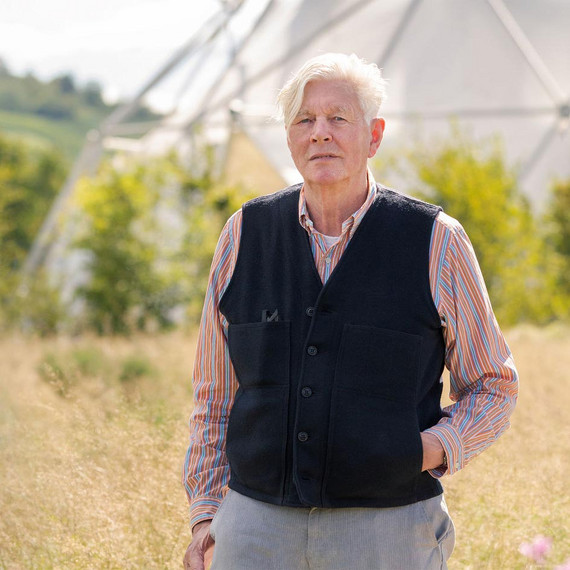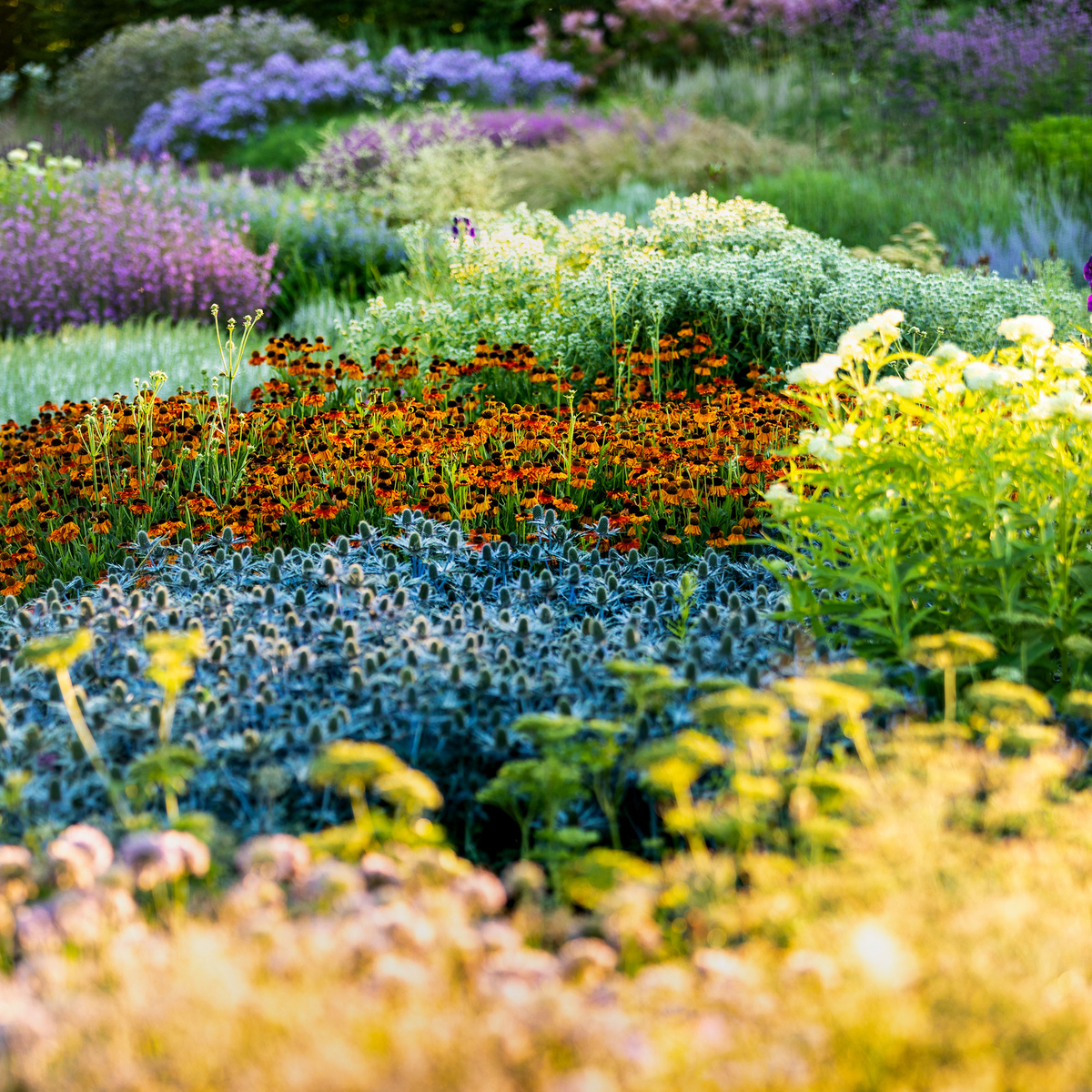»You have to make big mistakes to create a garden.«
Interview with Piet Oudolf
Piet Oudolf’s famous gardens may appear wild and natural, but they are the result of meticulous planning. To him, working with plants means absolute freedom – an experience he would like everyone to share.
Annemarie Ballschmiter: Looking at your compositions, one gets the impression that you love violet and are reluctant about yellow.
Piet Oudolf: Yellow can be very dominant. But I use plants with yellow flowers, too. After all, they only flower for a few weeks or so. What really matters is the plant’s character and whether what is left of it after flowering makes a garden interesting. Yellow may not be so agreeable to the eye, but I may need that plant later in the year because of its character.
So shape and sculptural qualities are more important than colour?
When you’re creating a garden, the question isn’t so much what a specific plant looks like when it’s in bloom, it’s more about how it interacts with all the other plants, whether they form a community. A flowering plant is only the second step, not the first, when you’re composing a garden.
What were the first steps when it came to the concept for the Vitra Garden?
There were many options to choose from on the Vitra Campus. I was able to choose freely and decided it would be nice to have the garden in front of the VitraHaus. That way the people coming out of the building see the garden and feel that it is beckoning to them, welcoming them. So that was our canvas. Around four thousand square metres – a good size for a garden.
Once you have your canvas, what do you do next?
The next step is a kind of master plan determining how people move about the garden. We also had to integrate »Ring & Ruisseau«, the circular bench and the fountain designed by the Bouroullec brothers. We started with a system of paths for people to lose themselves in the garden. That is why we didn’t want anything linear, because that would mean people simply pass through the garden without looking at what is around them. Once that is done, we go back to our studio and make a list of plants that we know will work for the location. Then I choose a plant from that list and start composing.
Do you always start with the same plant?
No, I choose it pretty much at random. Then I put it to paper at certain intervals, take the second plant, and so on. The process of designing is similar for each garden, but never the same.
You have changed the way gardens are designed today; you’ve made people more aware of the sculptural qualities of plants when not in bloom.
You have to look at the qualities of plants throughout the year. A plant that blooms early can still look wonderful in November because it has an attractive skeleton. Some thistles are fantastic. Or take Eryngium, Achillea, Echinacea. In my gardens, plants that look good at all seasons provide the basic structure.
Are some plants notoriously underappreciated?
Thirty years ago I wrote a book about underappreciated garden plants. Today they are all quite common. Most of the plants I use are available because I made them available, like Eupatorium. Or plants that grow to a height of two metres, like Miscanthus. Back then, people didn’t want a thing like that in their garden, but I liked them, because they can replace shrubs. The same was true for grasses. When I started designing gardens, people were obsessed with English gardens and flowering plants, and hardly anyone was interested in grasses.
What is the biggest mistake an amateur gardener can make?
You have to make big mistakes to create a garden. You have to do a lot of experimenting. And in the end you get a feel for it. Gardening is learning.
What is your advice to a beginning gardener?
Don’t do as I did. Do what you can and what you want – from growing vegetables in the courtyard to growing plants from seeds or buying flowers. And always do more. Working with plants is a profound experience. Imagine a child putting seeds in the ground and seeing how they germinate and grow. Working with plants means absolute freedom. Freedom to do what you want.
The conversation is an excerpt from the interview »I compose with plants«, published in Welt am Sonntag on 20.06.2021, by Annemarie Ballschmiter
You can find all information on the exhibition »Garden Futures: Designing with Nature« here.

